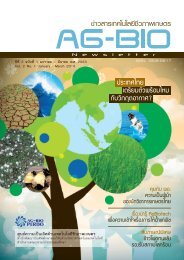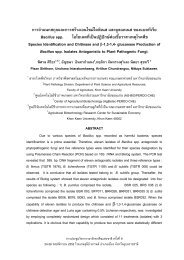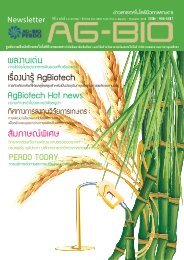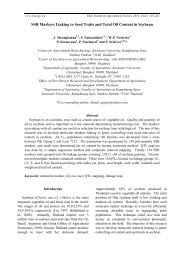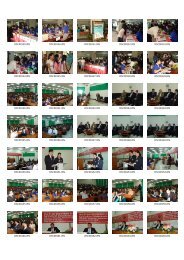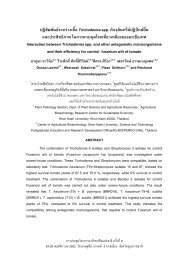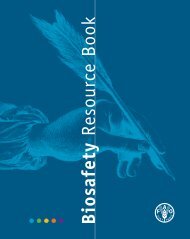Biosafety Manual PDF - Lawrence Berkeley National Laboratory
Biosafety Manual PDF - Lawrence Berkeley National Laboratory
Biosafety Manual PDF - Lawrence Berkeley National Laboratory
Create successful ePaper yourself
Turn your PDF publications into a flip-book with our unique Google optimized e-Paper software.
<strong>Biosafety</strong> <strong>Manual</strong><br />
IBC-approved version (May 18, 2010)<br />
• Inactive means the material is not capable of acting or reacting normally. For example,<br />
infectious proteins (i.e., prions) may be inactivated by chemical destruction.<br />
• Decontaminated means the material has been treated (e.g., sterilized or disinfected) so<br />
that biological contaminants or components have been reduced or inactivated to an<br />
acceptable level to reduce or eliminate the possibility of transmission of pathogens to<br />
undesired hosts. For example, fresh human bones may be decontaminated internally by<br />
radiation.<br />
Biological material and agent hazards are further covered in Section 3.3 as follows:<br />
• The risk group (RG) classification system used to categorize agents and materials<br />
based on the risk of disease in humans (see Section 3.3.1 below)<br />
• Biological risks and concerns related to the following categories of biological materials<br />
and agents:<br />
o Pathogenic agents and toxins (see Section 3.3.2 below)<br />
o U.S. Department of Agriculture (USDA)-regulated materials, organisms, and<br />
agents (see Section 3.3.3 below)<br />
o Bloodborne pathogens and human materials (see Section 3.3.4 below)<br />
o Recombinant materials, organisms, and agents (see Section 3.3.5 below)<br />
o Animals (see Section 3.3.6 below)<br />
3.3.1 Risk Group Classification<br />
The principal hazardous characteristics of the agents that are present, or may be present in the<br />
biological material, must be considered while completing the initial risk assessment. This<br />
consideration includes an assessment of the agent’s capability to infect and cause disease in a<br />
susceptible human or other host, the severity of disease, and the availability of preventive<br />
measures and effective treatments. To facilitate this assessment process, the World Health<br />
Organization (WHO) and NIH established an agent risk group (RG) classification for<br />
laboratories. This RG classification system, which was also adopted by the CDC, describes four<br />
general RGs based on the hazardous characteristics of agents, and the transmission route of<br />
natural disease in humans.<br />
LBNL uses the four RG levels and definitions provided in Appendix B of the U.S.-based NIH<br />
Guidelines (see Table 2 below). As shown in Table 2, a higher RG level indicates a higher risk<br />
for disease in humans. Assignments of RGs to specific agents may be found in various sources,<br />
including:<br />
• Appendix B, Section B.2, of this manual: Provides a list of human pathogens and their<br />
RG designations as excerpted from Appendix B of the NIH Guidelines (Classification of<br />
Human Etiologic Agents on the Basis of Hazard)<br />
• The American Biological Safety Association (ABSA) Risk Group Database<br />
Printed copies are not official versions of this manual. Before using the printed copy, verify that it is the most current version.<br />
14



